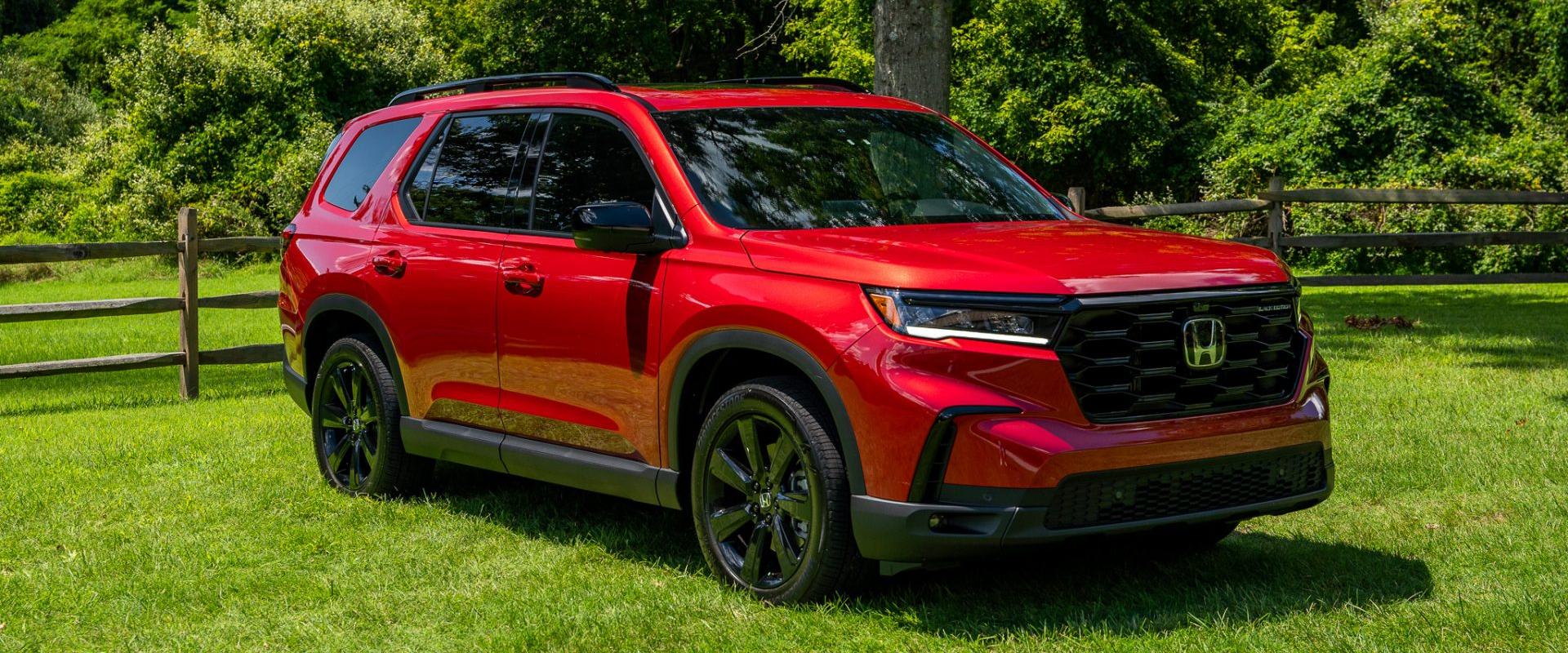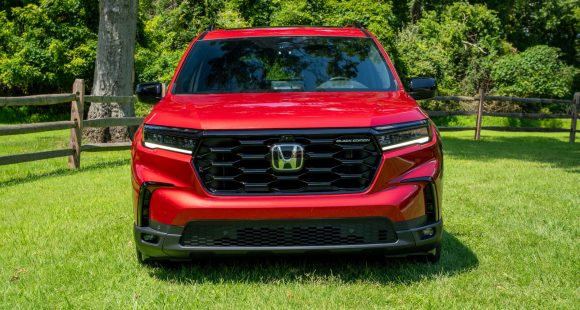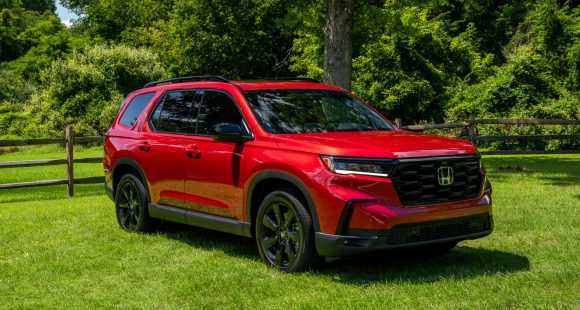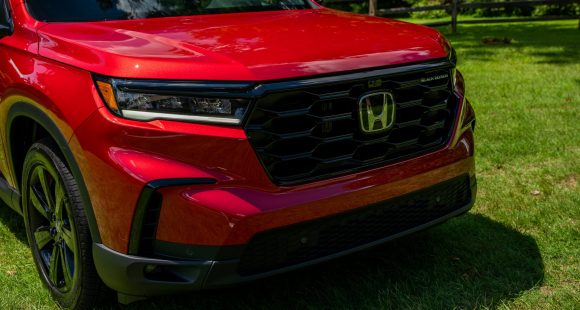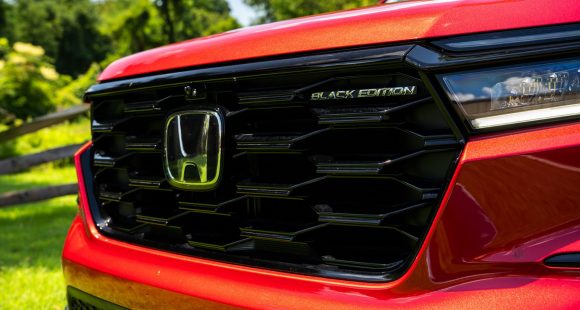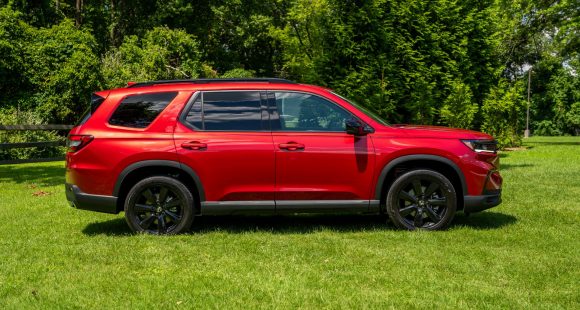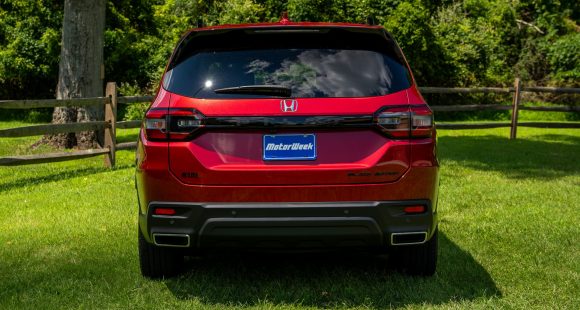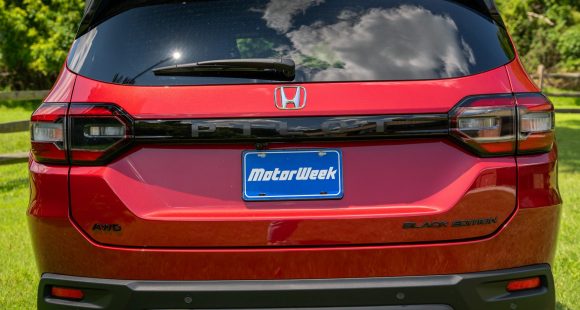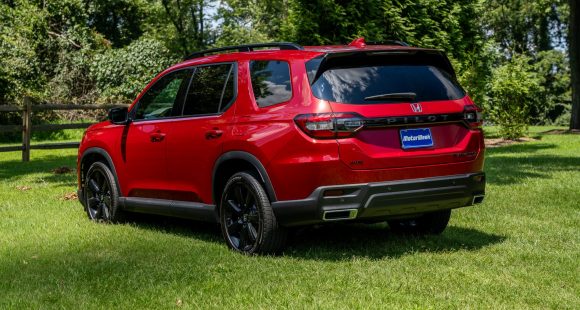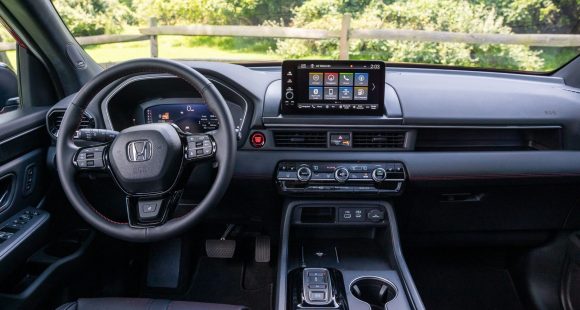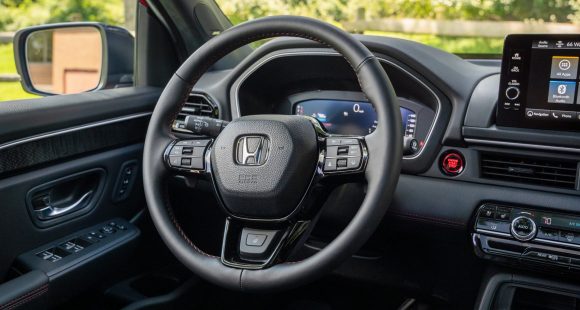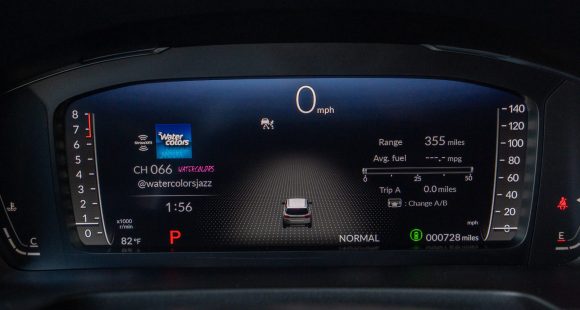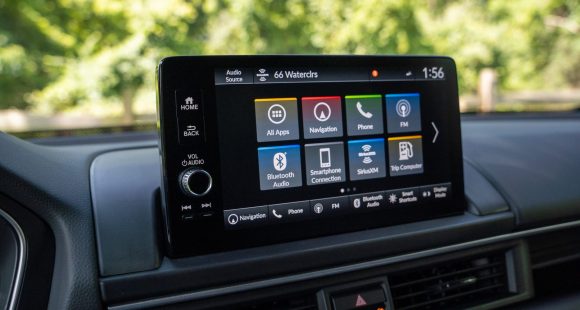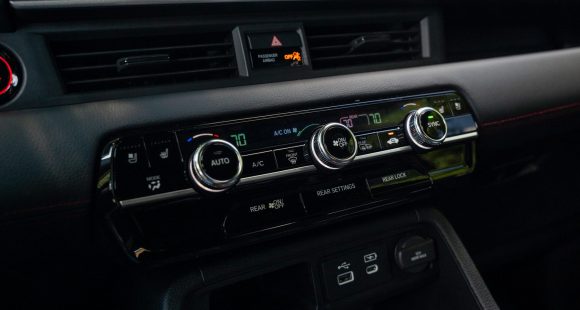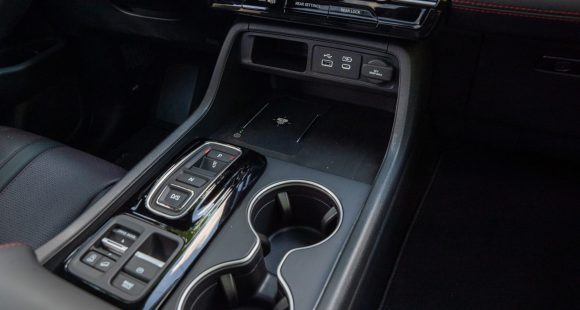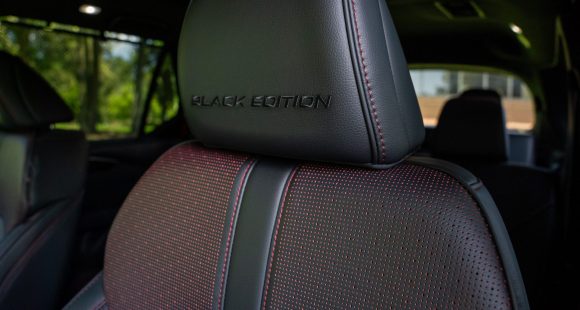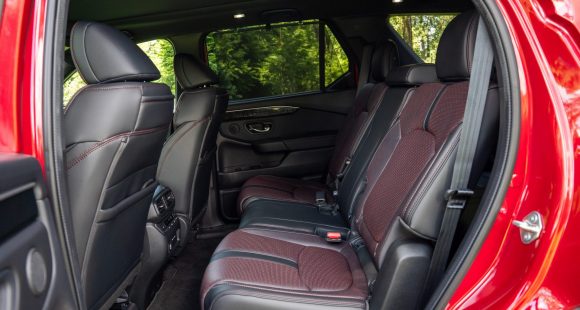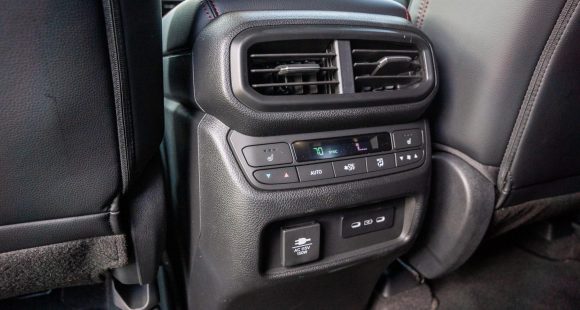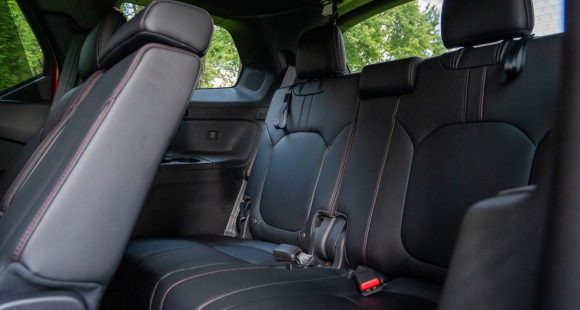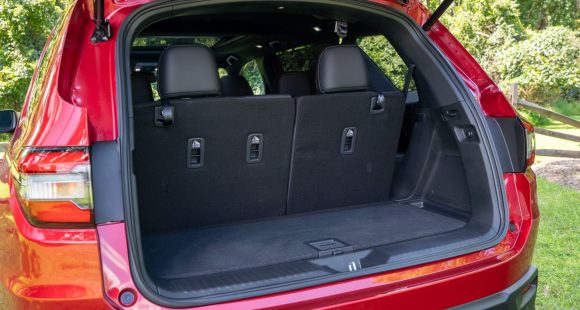2017 Jaguar F-PACE
The Jaguar brand always seemed to be in some type of turmoil, going all the way back to its 60’s heydays. Boy has that changed, these days it appears to have a very solid footing under Tata ownership, producing a string of very impressive vehicles. Notice we didn’t say “cars”. For behold, the F-Pace, Jaguar’s first crossover utility, a “cat” designed to really stir up the market.
Let’s get this straight right out of the box; a Jaguar utility vehicle, as implausible as it may sound, is not really a stretch. After all, Jag’s been partnered with Land Rover since Ford bought the pair in 2000. And during that time, SUVs from luxury brands have gone from a rarity to a necessity. So, this 2017 Jaguar F-PACE shouldn’t be a surprise.
And truth be told, it would have made a fantastic Land Rover. Be that as it may, there are plenty of SUV and crossover sales to go around, and somehow Jaguar resisted the urge to just rebadge a Range Rover, by basing the F-PACE on their own XE/XF sedan chassis. Good call on their part, as it makes it truly unique.
Both the structure and most body panels are aluminum of course, and it looks fantastic, drawing a crowd wherever we parked it. The familiar grille tells everyone what it is; while the 20-inch wheels, with big brakes behind, on this F-Pace S, clue everyone in on its performance potential. Up to 22-inch wheels are available.
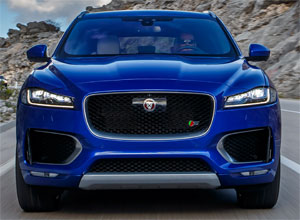 The rear continues the theme established by the F-TYPE, particularly with the LED tail lights. But all-in-all, it looks exactly like you might expect a Jaguar crossover to look like.
The rear continues the theme established by the F-TYPE, particularly with the LED tail lights. But all-in-all, it looks exactly like you might expect a Jaguar crossover to look like.
Powertrain options include 2-different supercharged 3.0-liter V6s, a 340-horsepower version, and the 380-horsepower unit in our S, both rated at 332 lb.-ft. of torque. Plus, a 180-horsepower 2.0-liter I4 turbo-diesel.
All F-PACE’s get an 8-speed automatic transmission with all-wheel-drive.
Behind the wheel, there’s a very familiar Jaguar feel, which is awesome. Smooth and willing. In similar fashion to BMW, Jaguar has established a tremendous brand consistency throughout their lineup.
The F-PACE is also one of those rides that feels faster than you’re expecting, even when you know it’s going to be fast.
F-PACE operates on rear-wheel-drive until traction is lost, at which time in can send 50% of the power forward. Adaptive Surface Progress Control is autonomous driving for off-road, designed for keeping you from hurting your Jag on steep hills or slippery conditions. That’s technology we can get behind; as no doubt it comes from Land Rover. Ground clearance is a fine 8.4-inches.
 Taking full control ourselves, for straight line sprints, this F-PACE S put plenty of power down; leaping off the line to 60 in just 5.2-seconds.
Taking full control ourselves, for straight line sprints, this F-PACE S put plenty of power down; leaping off the line to 60 in just 5.2-seconds.
Gear changes were brisk, the exhaust sounds exotically loud, and in 13.6-seconds we were at the end of the 1/4 mile travelling at 103 miles-per-hour.
Steering was light, tight, and nimble; and overall it handled extremely well. There was bit of expected understeer, but it remained very flat through our cone course.
On the inside, the F-Pace layout is similar to the XE sedan, but materials are a welcomed step above. And we’re glad to finally see an infotainment system worthy of the brand, Jag’s new InTouch Pro features a 10-inch tablet-like interface.
Front seats have substantial bolstering, but also very good comfort and tons of adjustments.
The expected Jag elements, like the pop-up rotary shifter and TFT gauges are present, but there’s plenty of utility as well, with decent rear seat people space, and 33.5 cubic-ft. of seat-up cargo room.
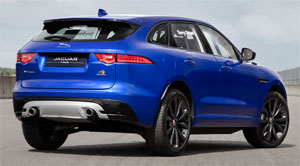 Government Fuel Economy Ratings are 18-City, 23-Highway, and 20-Combined. We averaged a good 21.7 miles-per-gallon on Premium. The Energy Impact Score is about average, with 16.5-barrels of oil burned and 7.4 tons of CO2 emitted annually.
Government Fuel Economy Ratings are 18-City, 23-Highway, and 20-Combined. We averaged a good 21.7 miles-per-gallon on Premium. The Energy Impact Score is about average, with 16.5-barrels of oil burned and 7.4 tons of CO2 emitted annually.
Get the diesel if you want better, it rates 29-mpg Combined.
With the F-Pace, Jaguar now has the broadest product line in their history. And, there is much to like about their first luxury-ute effort, including a base pricing that is quite low at $41,985. And that’s for the diesel. This F-PACE S starts at $57,695; certainly not awful for a vehicle of this caliber.
So, not only is the F-PACE a great mid-size luxury crossover utility vehicle, it’s a great Jaguar! It handles on par with anything similar from Porsche or BMW; for less than the price of a Tahoe. So, get used to seeing plenty of these cats prowling around stirring up the luxury utility market. The 2017 Jaguar F-Pace is truly one of the most outstanding vehicles we’ve driven this year.
Specifications
- Engine: 3.0 liter
- Horsepower: 380
- Torque: 332 lb.-ft.
- 0-60 mph: 5.2 seconds
- 1/4 mile: 13.6 seconds @ 103 mph
- EPA: 18 mpg city / 23 mpg highway,
- Energy Impact: 15.6 barrels of oil/yr
- CO2 Emissions: 7.4 tons/yr
2024 Toyota Land Cruiser
Toyota’s Go Anywhere Globetrotter Returns To U.S.
Every once in a while, we all need a reset. A time to get back to basics and prioritize the things that really matter. Well, for the Toyota Land Cruiser that time is now. So, let’s find out if that means bigger and better things for Toyota’s iconic off-roader.
The Toyota Land Cruiser’s status among the global off-road community is legendary, and it’s hard to imagine there’s any corner of the earth where a Land Cruiser hasn’t kicked up a little dust or mud. Well, 2024 sees the return of the Land Cruiser to the U.S. market after a 3-year hiatus, getting a major reset for the journey.
The reset comes mostly by no longer being based on the large three-row “300-series” chassis, but a new version of the smaller “200-series,” now known as the J250. As with the latest Tacoma, it uses the Tundra pickup’s full-size steel frame.
While the main Land Cruiser model, which goes by simply Land Cruiser, is packed full of luxury and convenience features, there is also a stripped-down model known as the 1958, honoring the first year the Land Cruiser made landfall here in North America. And it is that 1958 we have here, and we were glad to see it, as it also celebrates the original’s back-to-basics approach as a blank canvas for you to personalize as you tackle more and more adventures.
Not that it’s fully stripped down, as 8-inch touchscreen infotainment, a 7-inch full-color multi-information display, and automatic climate control are still standard. Plus, some seriously durable materials, and great heated cloth front seats that throw off some get serious 1990s Tacoma vibes.
But outside, there’s a definite lack of flashy trim and basic looking 18-inch wheels with Yokohama Geolander all-season tires; plus, big chunky bumpers and tilt-up back glass, which is a rarity that we appreciate. Though there is a little too much plastic in places that are sure to see some abuse if you do any significant off-roading.
It even feels a little rough around the edges, but for us it just adds to the rugged old-school utility vibe in a good way.
We did just that, both here in the Mid-Atlantic as well as in the California desert; and while there are some tech-forward driving aids, the actual hardware is in most cases plenty to get things done. That includes standard full-time dual-range four-wheel-drive, locking center and rear diffs, and 8.7-inches of ground clearance. A front stabilizer bar disconnect is also available to allow for increased articulation.
Who needs a V6 or even a V8 when you’ve got Toyota’s i-FORCE MAX setup at your disposal with 326 horsepower and 465 lb-ft of torque coming from a 2.4-liter turbo-four with an electric motor sandwiched between the engine and its eight-speed automatic transmission. Low speed torque delivery is impressive. It even feels a little rough around the edges, which may be a turn off to some, but for us it just adds to the rugged old-school utility vibe in a good way.
And it certainly feels quicker than an off roader needs to be, with an instant torque dump as soon as we eased on the throttle at our Mason Dixon test track; helping us get to 60 in 8.1 seconds and through the quarter-mile in 16.3 seconds at 86 mph. Considering the Land Cruiser’s terrain conquering mission, it behaved quite well in our handling course; it was plenty responsive to inputs, with less body roll than we expected and plenty of grip from the tires. The steering was light and quick but as expected didn’t provide much feel. Other than significant nosedive, braking performance was exceptional. Only 107-feet to panic stop us from 60 mph.
With the shift to the smaller size, there’s no more third row available, and cargo capacity now comes in at 46.2 cubic-feet with a max of a still healthy 82.1. Now, the best part of the Land Cruiser’s return is the entry price of $57,445. That’s about 30-grand less than what the last Land Cruiser went for back in 2021.
Whether it’s over the top fashion trends, mullets, or zombies; just when you think they’re dead, they come roaring back to life. Of course, we’re much happier to see the resurrection of this 2024 Toyota Land Cruiser than any of those things. Toyota is one brand that still recognizes the value of full-framed rugged rigs and has also acknowledged that sometimes less really is more. The Godfather of Toyota off-roading is back and better than ever.
2025 Honda Pilot Black Edition
Honda’s Most Elite Pilot Gets More Elite
Honda began their Pilot crossover program back in 2003, and it didn’t take long to see that this three-row ute was ready for prime time. Now in its 4th-generation, Honda has created the most off-road capable Pilot yet, but this year, they focus on another set of enthusiasts. Time for us to shine a line on this new Black Edition.
Honda has certainly been an elite performer in the SUV world since their CR-V first hit the pavement in the late 1990s. So much so, they’ve been using the term “elite” to mark their top trim level for years now.
Well, things rarely stay the same for too long in the car marketing world. Combine that with buyers willing to pay more and more for added bling, and there’s a new king of the Honda hill; Black Edition. Seen here on this 2025 Honda Pilot Black Edition.
Now the 4th generation Pilot was all-new for 2023, and after our test of the new off-road inspired TrailSport version, we were eager to get a taste of the finer things of Honda life. Now the Black Edition doesn’t so much add features, as ratchet up the Pilot’s style game with 20-inch gloss-black wheels and unique trim inside and out.
For the exterior, that also means glossy dark treatments applied to the grille, side mirrors, window trim, air intakes in the front fascia, and rear bumper; plus, unique logos of course.
Inside, exclusive red accent stitching is applied to the seats, steering wheel, and door panels; plus, red accent lighting and Black Edition logos.
Like every Pilot, 3-row seating is standard. But, while both 1st and 2nd rows are very spacious, that 3rd row is best suited for kids, and the 1-touch access is about as easy as it gets.
Storage space is great too, and with multiple folding options for the 2nd row, it offers a lot of flexibility and a nice flat floor when everything’s folded. There’s 18.6 cubic-ft. of room behind the 3rd row, 48.5 behind the 2nd, and a giant 86.5 with all seatbacks folded.
Front seating is as comfortable as it is spacious, and while the Pilot’s 9-inch touchscreen is relatively small by the latest standards, it, as well as the rest of the controls, are simple and straightforward to operate.
Storage space is great too, and with multiple folding options for the 2nd row, it offers a lot of flexibility.
Producing the Pilot’s get-up-and-go is Honda’s familiar naturally aspirated 3.5-liter V6, outputting 285-horsepower and 262 lb-ft. of torque. It flows through a 10-speed automatic transmission to the front wheels. All-wheel-drive with Intelligent Variable Torque Management is available in Sport, EX-L, and Touring trims. It’s standard for TrailSport, Elite, and of course, Black Edition.
Power felt more than adequate on the street. But what about at our Mason Dixon test track?
Here too power felt strong off the line. But, our computer showed it tempered quickly, taking a longish 8.2-seconds to reach 60. That’s also quite a bit off the pace of the 6.8-seconds we saw in the TrailSport two years ago. Gear changes in the 10-speed automatic were very smooth, but also a little slow, as we worked our way to the end of the ¼-mile in 15.9-seconds at 90 miles-per-hour.
Minimal body roll and a moderate amount of understeer set the tone in our handling course, where this Pilot felt well planted and easy to control, with very little stability system intervention, even as we carried fairly high speeds through the cones.
Panic stops from 60 averaged a good 115-feet. There was a fair amount of nosedive, but results were quite consistent thanks to minimal fade.
So, despite a somewhat slow roll out, we were pleased with the Pilot’s overall very competent and safe track performance.
Back to the street, Government Fuel Economy Ratings, with all-wheel-drive are 19-City, 25-Highway, and 21-Combined; we averaged a good 24.2 miles-per-gallon of Regular.
The Energy Impact Score is slightly below average, using 14.2-barrels of oil annually, with CO2 emissions of 7.0-tons.
With a new top end trim level, Honda also eliminated one at the bottom; no more LX. Sport is now the base model starting at $41,595, with all-wheel-drive a $2,100 option. Top Black Edition starts at $55,975.
The Honda Pilot has been a leader in the 3-row SUV segment ever since it arrived on the scene for 2003, delivering capability, reliability, and driving dynamics well above its class norm. So, after focusing on off-road ruggedness in recent years, the 2025 Honda Pilot Black Edition adds a welcomed bit of black-tie flair to the Honda SUV party.
Specifications
As Tested
- Engine: 3.5-liter V6
- Transmission: 10-speed automatic
- Horsepower: 285
- Torque: 262 lb-ft.
- EPA: 19 City | 25 Highway | 21 Combined
- 0-60 mph: 8.2 seconds
- 1/4 Mile: 15.9 seconds at 90 mph
- Braking, 60-0 (avg): 115 feet
- MW Fuel Economy: 24.2 MPG (Regular)








